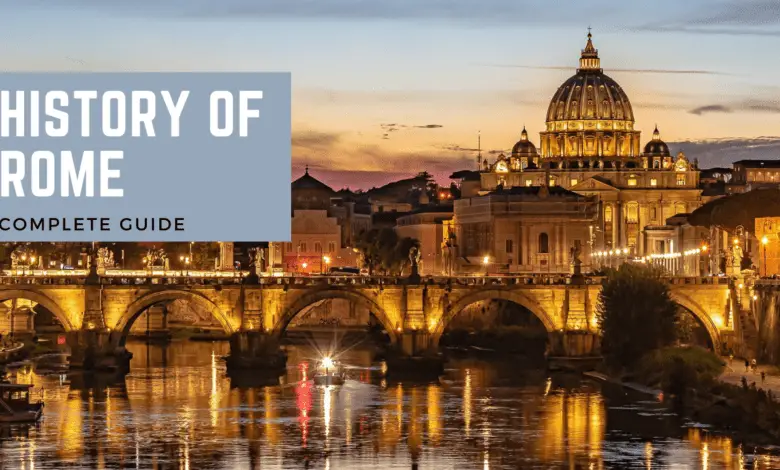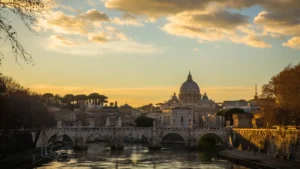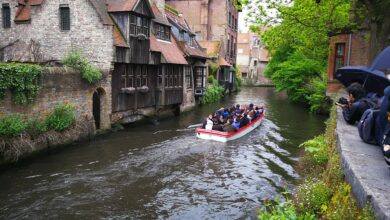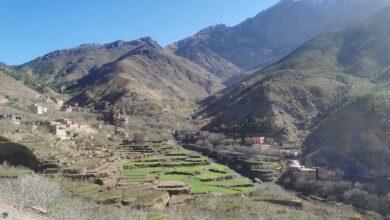Rich History of Rome: A Cultural Journey Through the Eternal City
Delve into the Magnificent Tapestry of Rome's Heritage and Heritage Sites

Introduction
Nestled on the banks of the Tiber River, Rome stands as a living testament to the enduring power of human civilization. For centuries, this ancient city has captivated the hearts and minds of travelers, historians, and artists alike. Its rich history, spanning over two and a half millennia, has left an indelible mark on the world, shaping the course of Western civilization and influencing cultures across the globe. Join us on a cultural journey through the Eternal City as we uncover the layers of history, art, and culture that make Rome a truly timeless destination.
Rome’s Significance
Rome, often referred to as the “Eternal City,” holds a special place in the hearts and minds of people worldwide. Its historical, cultural, and architectural significance is unparalleled, making it a must-visit destination for travelers. Here’s a brief overview of Rome’s significance.
- Historical Treasure Trove: Rome was the heart of the mighty Roman Empire, which once ruled vast portions of the world. Its historical importance is evident in iconic landmarks like the Colosseum, Roman Forum, and the Pantheon. These structures are not just ancient ruins but living testaments to a glorious past.
- Spiritual Center: Rome is the seat of the Roman Catholic Church, and it houses the Vatican City, an independent city-state and the spiritual epicenter of the Catholic faith. St. Peter’s Basilica, a masterpiece of Renaissance architecture, and the Sistine Chapel, adorned with Michelangelo’s famous frescoes, draw pilgrims and art enthusiasts alike.
- Cultural Hub: Rome’s influence on art, literature, and philosophy is immeasurable. It’s the birthplace of Renaissance art, and its museums, such as the Vatican Museums and the Capitoline Museums, house priceless works by artists like Raphael, Leonardo da Vinci, and Caravaggio.
- Architectural Marvels: Rome boasts a dazzling array of architectural wonders, from the grandeur of the Colosseum to the intricate beauty of the Trevi Fountain. The city’s skyline is a harmonious blend of ancient temples, Baroque palaces, and modern structures.
- Culinary Delights: Italian cuisine is renowned worldwide, and Rome offers an authentic gastronomic experience. From mouthwatering pasta dishes like carbonara to delectable pizzas, the city’s food scene is a culinary journey in itself.
Rome’s Allure for Travelers
The allure of Rome is timeless, drawing travelers from every corner of the globe to explore its rich tapestry of history, culture, and beauty.
- Unforgettable Landmarks: Rome is a city of iconic landmarks that evoke awe and wonder. Visitors can stand in the shadow of the mighty Colosseum, make a wish at the Trevi Fountain, or climb the Spanish Steps for panoramic views of the city.
- Art and Culture: Rome’s art and culture scene is vibrant and captivating. The Vatican Museums alone house an unparalleled collection of art and historical artifacts. Visitors can also attend classical concerts, opera performances, and art exhibitions throughout the year.
- Charming Neighborhoods: Rome’s neighborhoods each have their unique character. From the historic charm of Trastevere to the upscale boutiques of Via Condotti, there’s a neighborhood to suit every traveler’s taste.
- Café Culture: Rome is famous for its café culture. Sitting at a sidewalk café with a cappuccino or gelato in hand, watching the world go by, is a quintessential Roman experience.
- Warm Hospitality: Romans are known for their warm hospitality. Whether you’re exploring local markets or seeking recommendations for authentic trattorias, the locals are often more than willing to assist.

The Founding of Rome
Mythical Origins and the Legend of Romulus and Remus:
The founding of Rome is steeped in myth and legend, with the story of Romulus and Remus at its core. This mythical narrative has played a significant role in shaping Rome’s identity and history.
According to Roman mythology, the city of Rome was founded on April 21, 753 BC, by twin brothers Romulus and Remus. The story begins with their birth to Rhea Silvia, a vestal virgin, and Mars, the god of war. Fearful of their potential power, the twins were abandoned by the Tiber River and left to die. Miraculously, they were rescued by a she-wolf who nurtured and protected them.
As the twins grew older, they became natural leaders. When they discovered their true heritage, they decided to establish a city on the banks of the Tiber River. However, a dispute arose between them over the city’s location and name. Legend has it that Romulus prevailed, and he founded the city, naming it after himself – Rome.
The myth of Romulus and Remus embodies the idea of Rome’s destiny and greatness. It symbolizes the city’s enduring spirit, the blend of mortal and divine influences, and the notion that Rome was destined for greatness from its very inception.
Historical Foundations and the Etruscan Influence:
While the legend of Romulus and Remus provides a captivating origin story, the historical foundations of Rome are more complex. Rome’s early history was marked by influences from neighboring cultures, most notably the Etruscans.
The Etruscans, a civilization that thrived in central Italy, played a pivotal role in shaping Rome’s development during the 7th and 6th centuries BC. They introduced advanced architectural techniques, such as the use of the arch, which became a hallmark of Roman engineering. Additionally, the Etruscans influenced Rome’s religious practices and administrative structure.
Rome’s interaction with the Etruscans contributed to its growth as a city-state and laid the groundwork for its expansion and eventual dominance in the Italian Peninsula. The Etruscan influence can be seen in the layout of early Rome, with its distinctive rectangular city plan and infrastructure. You can check out more about Rome on Wikipedia.
Over time, Rome’s power expanded, and it assimilated many aspects of Etruscan culture while also forging its own identity. The Etruscan legacy remains an essential part of Rome’s early history, and it highlights the city’s role as a melting pot of diverse influences that contributed to its rise as a formidable empire.
The Roman Republic
Rise of the Republic and the Twelve Tables:
The Roman Republic marks a crucial phase in the history of Rome, characterized by the transition from monarchy to a system of governance based on laws and representative institutions. Two key elements that define the early Republic are its rise to power and the establishment of the Twelve Tables.
- Rise of the Republic: The Roman Republic emerged around 509 BC, following the overthrow of the last Roman king, Tarquin the Proud. The Romans, disillusioned with the monarchy’s tyranny, established a new system of government. In its place, they created a republic, where power was distributed among elected officials and governed by a system of checks and balances.
- The Twelve Tables: One of the most significant achievements of the early Roman Republic was the creation of the Twelve Tables, a foundational legal code. These tables of laws were publicly displayed in the Roman Forum, ensuring transparency and accessibility to all citizens. The Twelve Tables laid the groundwork for Roman jurisprudence and established principles of justice that influenced legal systems for centuries to come.
Expansion and Conquests:
The Roman Republic’s expansion and conquests were instrumental in shaping it into a formidable Mediterranean power, setting the stage for the later Roman Empire.
- Territorial Expansion: Rome’s expansion began in earnest during the Republic’s early years. The conquest of neighboring regions, such as central Italy and the Italian Peninsula, helped Rome gain control over vital resources and trade routes. The Republic’s military prowess, characterized by disciplined legions and innovative strategies, enabled it to expand rapidly.
- Punic Wars: The Punic Wars, a series of conflicts with the Carthaginian Empire, were instrumental in Rome’s rise to dominance. The most famous of these wars, the Second Punic War, saw the brilliant Carthaginian general Hannibal leading a daring invasion of Italy. Despite significant setbacks, Rome eventually emerged victorious, solidifying its control over the western Mediterranean.
- Conquest of the Hellenistic East: The Roman Republic expanded eastward, absorbing territories formerly controlled by Hellenistic kingdoms, including Greece and parts of Asia Minor. This expansion exposed Rome to the rich cultural heritage of the Greek world and led to the spread of Hellenistic influences throughout the Roman Republic.
- Impact on Governance: As Rome expanded, its governance and administrative systems had to adapt. The Republic incorporated conquered territories into its framework, granting them varying degrees of autonomy. Roman citizenship, a prized status, was gradually extended to select individuals from conquered regions, further integrating these territories into the Republic.
FAQs
Q: What are some must-visit museums in Rome?
A: Rome is home to many incredible museums. The Vatican Museums, the Capitoline Museums, and the Borghese Gallery are some of the most renowned.
Q: How can I skip the long lines at popular attractions in Rome?
A: To avoid long lines, consider purchasing skip-the-line tickets online in advance. Many attractions offer this option.
Q: Is it safe to explore Rome at night?
A: Rome is generally safe for tourists at night, but it’s essential to be aware of your surroundings and take standard safety precautions.
Q: What is the best time to visit Rome to avoid crowds?
A: The best times to visit with fewer crowds are during the shoulder seasons in spring (April to June) and fall (September to November).
Q: Are there guided tours available in Rome?
A: Yes, guided tours are widely available and can enhance your experience by providing in-depth insights into the city’s history and culture.
Q: What’s the best way to get around Rome?
A: Rome has an efficient public transportation system, including buses and metro lines. Walking is also an excellent way to explore the city’s historic center.
Conclusion
As we conclude our cultural journey through Rome, it becomes evident that this city is not merely a destination; it is a living chronicle of human achievement, resilience, and creativity. From its mythical origins to the height of its imperial power, from the architectural marvels of antiquity to the artistic rebirth of the Renaissance, Rome has continuously reinvented itself while preserving the essence of its past.
This Eternal City invites us to explore its history, art, and culture, providing an opportunity to connect with the timeless spirit of civilization. Whether you are a history enthusiast, an art lover, or simply someone seeking inspiration, Rome’s rich tapestry of heritage will leave an indelible mark on your soul. So, as you embark on your own journey through this remarkable city, remember that Rome is not just a place on a map; it’s an experience that transcends time, beckoning you to become a part of its enduring story.





Facebook Comments